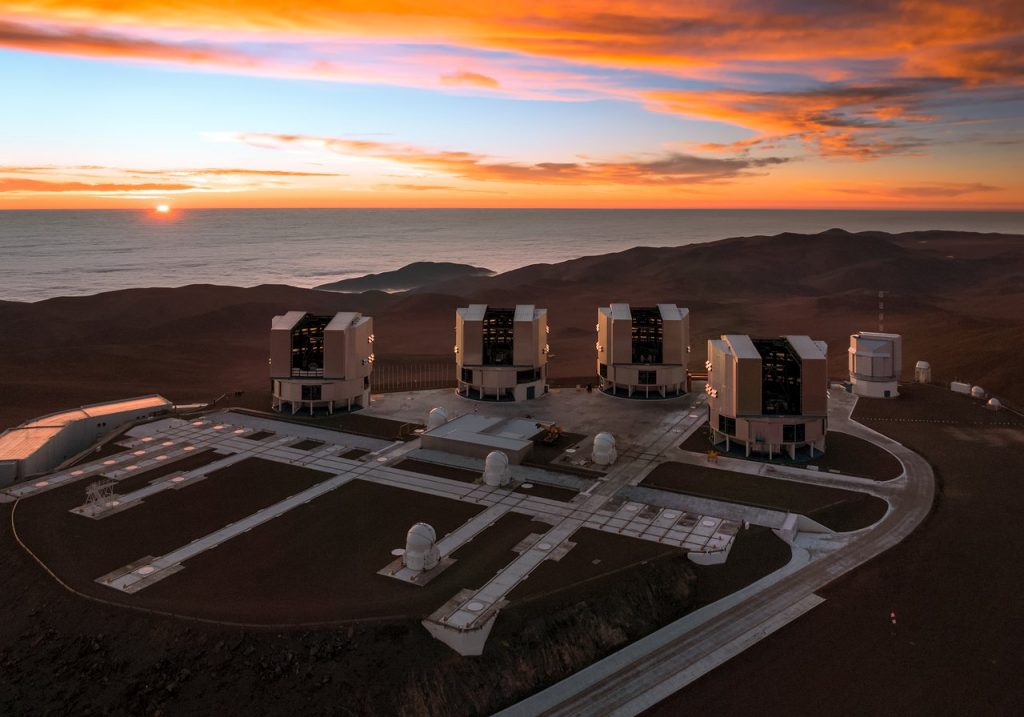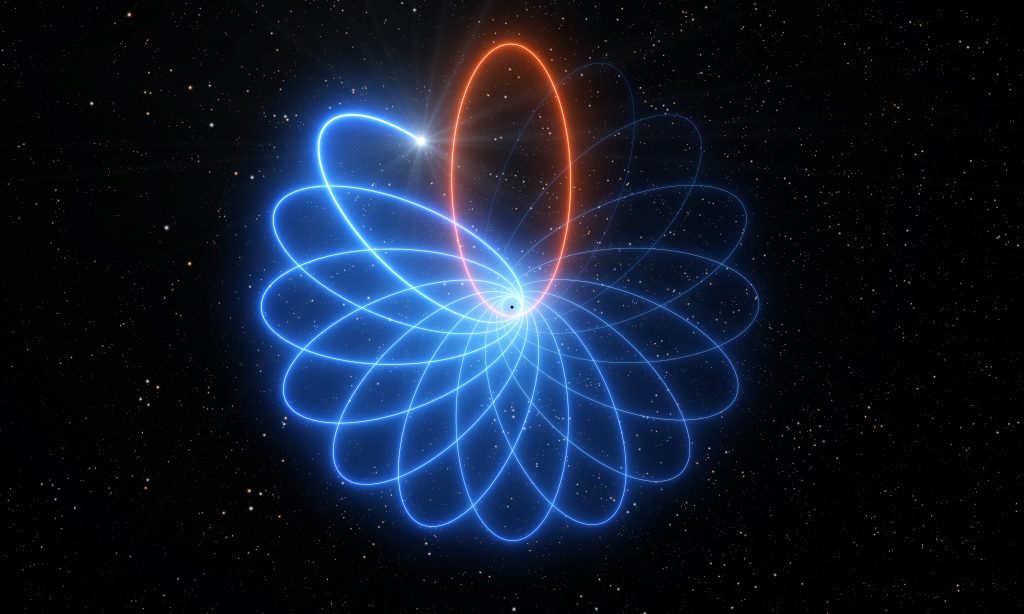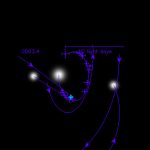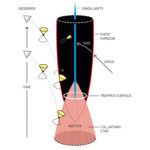Deep looks into the center of the Milky Way
The black hole at the center of our galaxy reveals itself through the stellar motions in its vicinity. With the Very Large Telescope Interferometer, these motions can be observed with high precision.
An article by Denise Müller-Dum and Jens Kube
There is a supermassive black hole at the center of our Milky Way. Its strong radio emissions led to the name Sagittarius A*: It is the strongest (A) radio source in the constellation Sagittarius. The nature of this radio source has been confirmed by stellar motions that researchers have observed since the 1990s. From the stars’ orbits, they determined the extent and mass of the central object. Given the result, the scientists concluded that the central object was a black hole. Andrea Ghez (University of California in Los Angeles, USA) and Reinhard Genzel (Max Planck Institute for Extraterrestrial Physics in Garching, Germany) received the Nobel Prize in Physics in 2020 for this finding, together with the theoretical physicist Roger Penrose.
High zoom in combination
The observations of the stellar motions at the center of our galaxy have been continued with increasing precision. With the Very Large Telescope Interferometer (VLTI), astronomers can now zoom in 20 times closer to the center of our galaxy than before.
The VLTI consists of the four telescopes of the Very Large Telescope (VLT) of the European Southern Observatory in Chile – an instrument also used by Nobel Prize winner Genzel. Together with four other, smaller mirrors, the telescopes – each eight meters in diameter – collect the light that is superimposed for VLT interferometry. An instrument called GRAVITY, which has been in operation since 2016, serves as the interferometer. It allows for a high spatial resolution, equivalent to that of a single telescope with a diameter of 120 meters. As a result, the technology has enabled several new discoveries.

Precise measurement of star orbits
In 2020, for example, researchers confirmed an effect of general relativity: They showed that the orbit of the star S2 does not follow an ellipse, as predicted by Newton’s theory of gravity. Rather, the orbit itself undergoes a rotation, giving it the shape of a rosette. In our solar system, the same effect is particularly strong in the orbit of Mercury. With their observations from the center of the Milky Way, the researchers demonstrated this so-called Schwarzschild precession at a black hole for the first time.

Between March and July 2021, astronomers took another look at the stars in the galactic center. Indeed, they moved exactly as predicted by general relativity – for objects orbiting a black hole with a mass of 4.3 million solar masses. The researchers were thus able to specify the mass of the black hole to this value. And they determined its position more precisely: The center of our Milky Way is 27,000 light-years away from us.
A record and a new discovery
During the observations, the star S29 passed the black hole within record proximity: at a speed of 8740 kilometers per second, it moved past Sagittarius A* at a distance of 13 billion kilometers. That is almost three times the distance of our outermost planet Neptune from our Sun. As of 2022, researchers had never observed a star passing the black hole faster or at a smaller distance. Thus, the central object cannot be larger than the observed minimum distance from S29 to the center.
A previously unobserved star also entered the astronomers’ field of view: S300, which had remained undetected until 2021 due to its faint light. This time, the astronomers were able to see it with the VLTI.
Ever more sensitive, ever closer
However, the researchers have not yet been able to answer one question: How rapidly does the black hole at the center of our Milky Way rotate? An answer to this question might be found in the foreseeable future: GRAVITY is currently being further developed into GRAVITY+ with the goal of further increasing the sensitivity of the instrument. With this upgrade, more stars in even closer orbits around the black hole could become visible. These objects would be so close to the black hole that they would be influenced by the gravitational effects caused by its rotation, and thus reveal more information about the black hole at the center of our galaxy.
Further Information
Read the ESO press release from December 14, 2021, on the 2021 discoveries.
Read the ESO press release from April 16, 2020, on the S2 orbit.
Colophon
is a trained physicist and geoscientist and works as a science communicator in Bremen, Germany.
is a trained astrophysicist and a freelance science communicator. Since 2018, he is the editor for Einstein-online.
Citation
Cite this article as:
Denise Müller-Dum and Jens Kube, “Deep looks into the center of the Milky Way” in: Einstein Online Band 14 (2022), 1001










